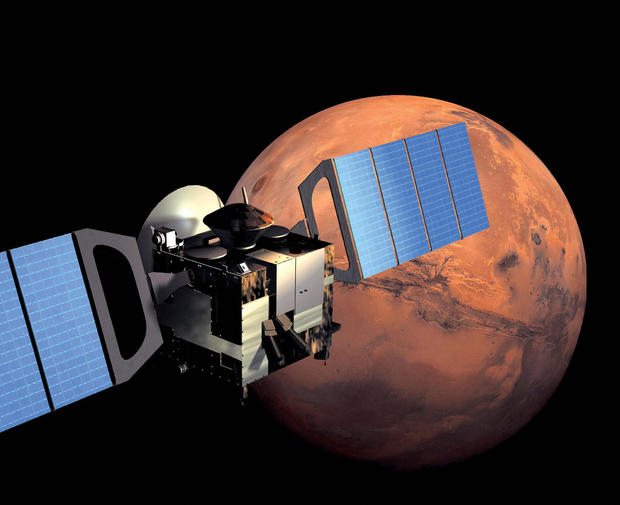New time-lapse images show the moon orbiting Earth — from Mars' point of view
Commemorating the anniversary of its first-ever planetary mission, the European Space Agency has released a time-lapse video that shows the moon orbiting Earth from a remarkable vantage point — the atmosphere above Mars.
Earth is seen as a small but bright sphere of light, with a much smaller and fainter sphere encircling it, in the video shared to the agency's website and social media page this week. The video was compiled using images taken by the Mars Express orbiter that launched on June 3, 2003, and continues to hover over the surface of Mars as its exploratory mission begins its 21st year.
The images of the moon and Earth were taken on May 15, May 21, May 27 and June 2, capturing more than half of the moon's monthly orbit around our planet.
"On the special occasion of Mars Express's 20th anniversary since launch, we wanted to bring Carl Sagan's reflections back to the present day, in which the worsening climate and ecological crisis make them more valid than ever," said Jorge Hernández Bernal, of the University of the Basque Country and Sorbonne University, who was part of the Mars Express team that worked to capture the images, in a statement.
Sagan, a scientist and astronomer, coined the description of Earth as a "pale blue dot" while reflecting on a now-iconic image of the planet from space, taken by NASA's Voyager I in 1990, at a distance 3.7 billion miles from the sun.
"In these simple snapshots from Mars Express, Earth has the equivalent size as an ant seen from a distance of 100 metres, and we are all in there," Bernal's statement continued. "Even though we have seen images like these before, it is still humbling to pause and think: we need to look after the pale blue dot, there is no planet B."
The images that make up the European Space Agency's time-lapse video were captured by the super resolution channel of the Mars Express orbiter's high resolution stereo camera, which is mainly used to observe the stars as well as Mars' two moons. The orbiter's mission is focused on investigating Mars' atmosphere and climate as well as the structure of the planet itself, its geology and mineralogy, and any potential traces of water.




